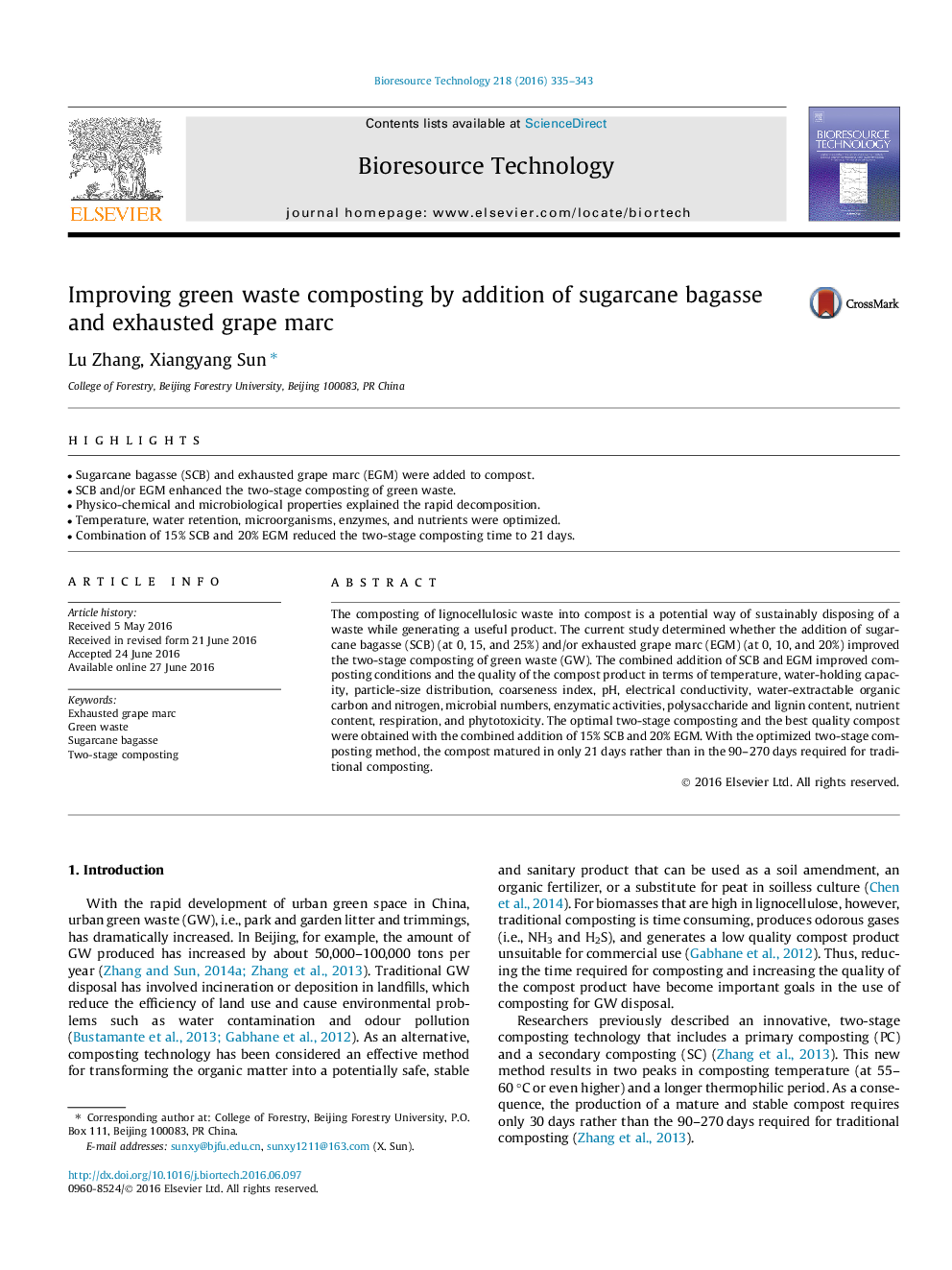| Article ID | Journal | Published Year | Pages | File Type |
|---|---|---|---|---|
| 7070598 | Bioresource Technology | 2016 | 9 Pages |
Abstract
The composting of lignocellulosic waste into compost is a potential way of sustainably disposing of a waste while generating a useful product. The current study determined whether the addition of sugarcane bagasse (SCB) (at 0, 15, and 25%) and/or exhausted grape marc (EGM) (at 0, 10, and 20%) improved the two-stage composting of green waste (GW). The combined addition of SCB and EGM improved composting conditions and the quality of the compost product in terms of temperature, water-holding capacity, particle-size distribution, coarseness index, pH, electrical conductivity, water-extractable organic carbon and nitrogen, microbial numbers, enzymatic activities, polysaccharide and lignin content, nutrient content, respiration, and phytotoxicity. The optimal two-stage composting and the best quality compost were obtained with the combined addition of 15% SCB and 20% EGM. With the optimized two-stage composting method, the compost matured in only 21Â days rather than in the 90-270Â days required for traditional composting.
Related Topics
Physical Sciences and Engineering
Chemical Engineering
Process Chemistry and Technology
Authors
Lu Zhang, Xiangyang Sun,
